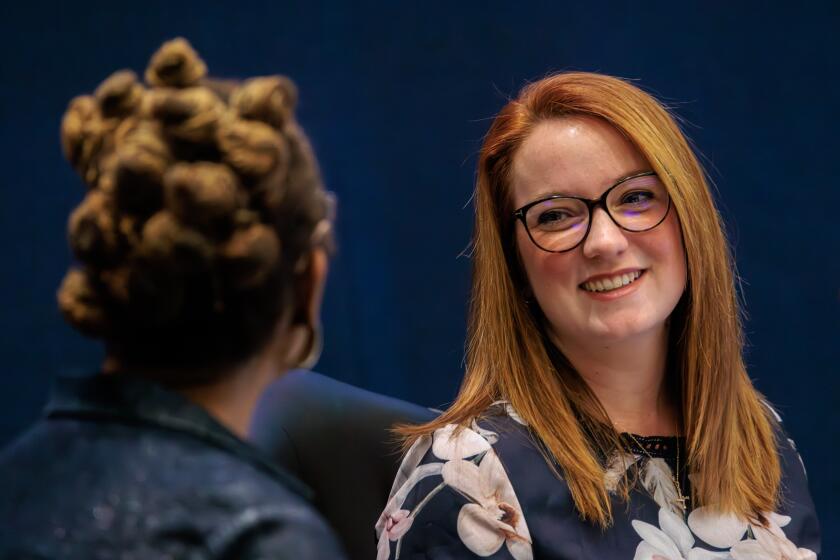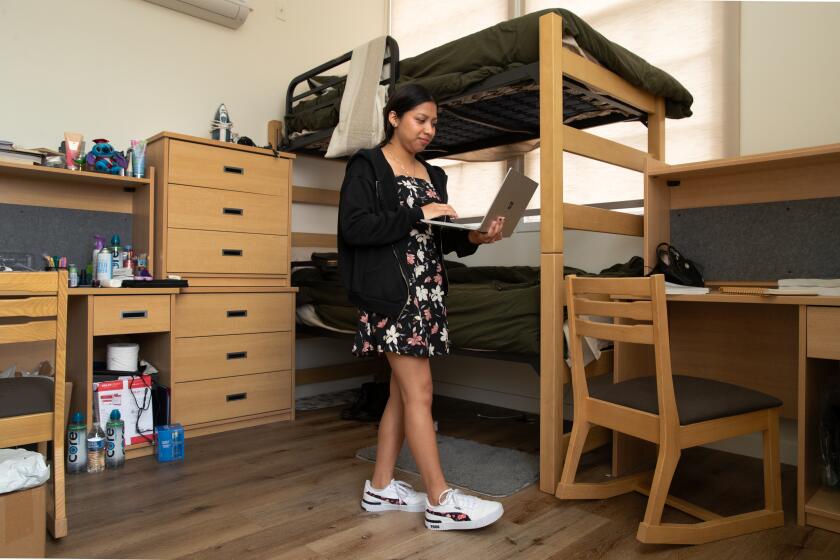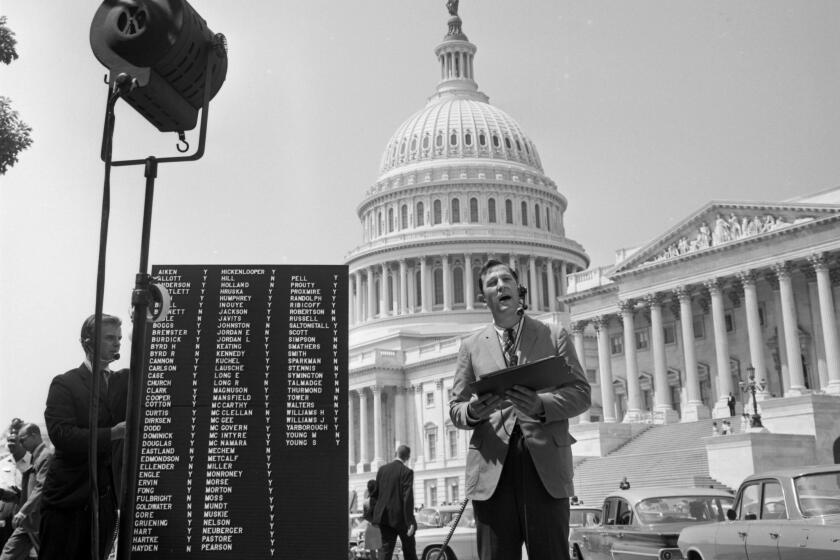Editorial: A disappointing applicant turnout for California’s citizens redistricting commission
It’s not terribly surprising that the applications for the 2020 Citizens Redistricting Commission have been thin compared to 2010. Back then, Californians had only recently voted to take the task of drawing of congressional and legislative districts away from self-interested politicians and give it to, well, citizens — regular Californians who presumably would make districts that served their values rather than those of incumbents. Interest in participating in this political revolution was high, and more than 30,000 people applied to be on the commission.
Now that the fresh new smell is gone, serving on this commission may seem like another unglamorous state government job. And one that doesn’t pay all that well despite requiring members to spend hours poring through census data, studying maps and listening to public testimony before actually drawing the nonpartisan district lines.
Nevertheless, the importance of the work of the 14-member commission has not ebbed in the last decade, and it’s disappointing that only about one-third as many people have applied for the next commission so far — and that those who have don’t adequately represent the state’s diverse population. Nearly two-thirds of the approximately 9,400 applicants as of Monday are white and 59% are men. Women outnumber men in this state, and while Latinos are the largest ethnic group in the state, only 14% of the commission applicants identify as such.
So what? That still leaves lots of non-white and female applicants to choose from, right? That may be true now, but if the process unfolds as it did in 2010, there is likely to be a steep drop-off in candidates in the second phase of the application process and then again as reviewers in the state auditor’s office cull the list down to just 60 people with the desired analytical skills and experience. Obviously, there’s better chance of having a diverse group of finalists if the initial pool is diverse.
Why does diversity on the commission matter? For one thing, that’s what voters endorsed in Proposition 11, which created the commission and said it should be “reasonably representative” of the state’s diversity. The measure didn’t specify how to get there, although it mandated political diversity in the form of five people each registered to the state’s two largest political parties and and four others. But the vision of the commission is to draw political districts that don’t unfairly disadvantage any Californians, no matter their race, age, gender and political leaning. That’s more likely to happen with a healthy representation of the population on the commission.
Organizations such as Common Cause (the primary author of the proposition creating the redistricting commission), Advancement Project California and the Mexican American Legal Defense and Education Fund blame the application process for the lackluster interest this time around. State Auditor Elaine Howle started taking applications six months earlier than the first time, and two months earlier than the law requires. Too early, the groups say, for them to prepare adequate outreach programs. For the first commission, they had nine months to prepare. This year, they had just weeks to get ready and are now scrambling to reach out to different communities before the Aug. 9 deadline.
Howle, who oversees the commission’s application process, has so far resisted the request by a coalition of community and advocacy groups to extend the deadline until the end of September. She has expressed confidence that there will be a slew of last-minute applications. Her office also says that the groups should have known about the earlier application period, but there’s some dispute about what was communicated and when.
What matters here is that California gets the best and most representative pool of applicants for the commission as possible. It would be great if by next week there are so many new applications from women and Latinos and Asian Americans and others that the diversity gap disappears. But why take the chance? It’s reasonable to extend the deadline by a few weeks considering that one of the justifications for starting the application process earlier than in 2010 was to build in more time for outreach.
More to Read
A cure for the common opinion
Get thought-provoking perspectives with our weekly newsletter.
You may occasionally receive promotional content from the Los Angeles Times.






